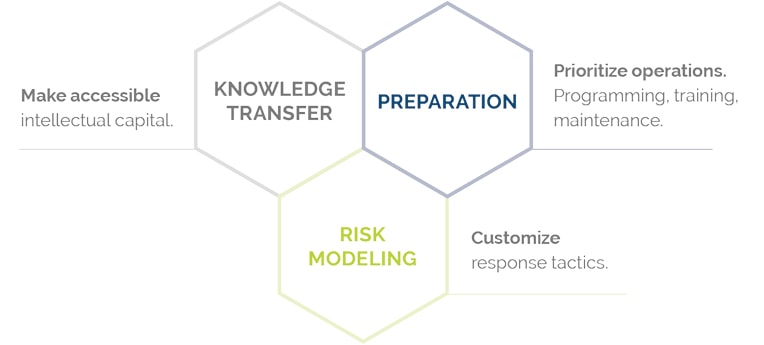Warehouse Management System (WMS) Implementation Best Practices

Best practice protocol necessitates that we continue to assess the effectiveness of the solution, as well as consider possible system enhancements, additions, and wish-list items.
Proactive steps toward improved configuration, user experience, and competitiveness.
Rob King is a software innovator focused on customer experience optimization. As QSSI’s chief product manager, he has a unique background in both supply chain management and software development, including warehouse materials handling and design.
Q. How do you plan for the interdependence of today’s warehouse operations?
That’s two questions in one. How do you plan for supply chain disruptions? And, how do you integrate your various enterprise systems to mitigate the risks associated with evolving warehouse conditions?
My short answer for both is continuous system enhancements.
Ours is a globalized world and, as a result, most products entering and exiting your facilities have components that crossed multiple borders and continents.
That’s a messy proposition, having to orchestrate both direct and indirect inputs. Add the labor market’s variability to the mix—and you really need technology solutions grounded in a common platform of integration, usability, and analytics.
Q. OK, then, what’s the best time to configure your warehouse systems for 100% uptime?
Yesterday. Definitely, right now. Ideally, you’ve taken advantage of the WMS implementation process.
Implementation is a critical phase for ensuring optimal WMS performance. In conjunction with a robust discovery process, this phase is about defining the boundaries and influences on your warehouse environment.
We then map WMS capabilities to meet operational requirements and workflow. The ultimate goal is to protect assets and optimize operations throughout the long lifecycle of your warehouse.
Q. How do you prepare for future changes in your business?
Yes, market shifts are unavoidable. Just how adeptly your people will consider, analyze, and disseminate new information from multiple sources (whether disruptive or opportunistic in nature) is dependent on established procedures, operational programming, ongoing training, and technical maintenance protocol.
A successful WMS implementation achieves balance between thinking outside conventional solutions for perceived supply chain disruptions—and optimizing your company’s tried-and-true methods.
Q. How do you build resiliency into your WMS?
Performance is measured over a facility’s lifetime, which necessitates a reliable baseline, one based on pre-established business rules and operational parameters, made flexible by extensive integration testing.
A resilient WMS is functionally interactive with other enterprise systems. You want a highly adaptable platform for data to flow from external systems to your WMS where it can be processed and transmitted to other systems.
A resilient system has to be a complete solution; your WMS should be woven into your daily business operations.
Q. Any final words of advice for implementing a WMS?
Yes, keep in mind that due diligence is ongoing. “Training the trainer” during WMS implementation ensures that future system enhancements are identified and promptly acted upon using optimal methods.
Everyone—warehouse supervisors, end users, and system administrators—need to participate on an ongoing basis.
Best practice protocol necessitates that we continue to assess the effectiveness of the solution, as well as consider possible system enhancements, additions, and wish-list items. Change is an anticipated outcome of real-life application.
—Interview with Robert King, Principal, Chief Product Manager
QSSI PowerHouse WMS, www.qssi-wms.com
